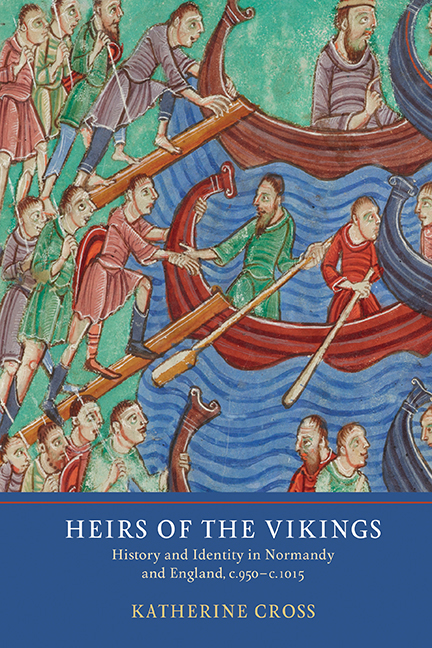Book contents
- Frontmatter
- Dedication
- Contents
- List of illustrations
- Acknowledgements
- Abbreviations
- Note on terminology
- Map
- Introduction: The Problem of Viking Identity
- 1 Genealogy: Building a Viking Age Dynasty
- 2 Origin Myths: A People for a Dynasty
- 3 Hagiography I: Ruin and Restoration
- 4 Hagiography II: Saintly Patronage
- 5 Charter Narratives: Normans, Northumbrians and Northmen
- Conclusion: Viking Age Narratives and Ethnic Identities
- Appendix 1 The Date of Fulbert's Vita Romani
- Appendix 2 The Dates of the Latin Vita Prima Sancti Neoti and the Old English Life of St Neot
- Bibliography
- Index
Conclusion: Viking Age Narratives and Ethnic Identities
Published online by Cambridge University Press: 19 July 2019
- Frontmatter
- Dedication
- Contents
- List of illustrations
- Acknowledgements
- Abbreviations
- Note on terminology
- Map
- Introduction: The Problem of Viking Identity
- 1 Genealogy: Building a Viking Age Dynasty
- 2 Origin Myths: A People for a Dynasty
- 3 Hagiography I: Ruin and Restoration
- 4 Hagiography II: Saintly Patronage
- 5 Charter Narratives: Normans, Northumbrians and Northmen
- Conclusion: Viking Age Narratives and Ethnic Identities
- Appendix 1 The Date of Fulbert's Vita Romani
- Appendix 2 The Dates of the Latin Vita Prima Sancti Neoti and the Old English Life of St Neot
- Bibliography
- Index
Summary
The evidence of genealogies, histories, hagiographies, charters and law codes reveals how Viking Age writers deployed diverse visions of ethnic relations in different texts and contexts. In some instances, vikings of the ninth century were depicted as the enemies of Christians and even equated with contemporary Danish attackers, while in others viking heritage or distant Scandinavian origins were drawn on as a source of pride and power. Dudo's De moribus evoked both perspectives at once. Yet such apparent contradictions should not pose a problem for the historian. Rather than attempting to reconcile these varied accounts into a single vision of ethnic relations in either England or Normandy, we must engage with the purposes and impact of each ethnic narrative and its propagation. The varied depictions of ethnic relations in both societies provide evidence that early medieval ethnicity was indeed ‘situational’: not an innate and unchanging feeling but a flexible expression of perceived social relations, formulated in response to immediate needs and political concerns.
The diversity of ethnic narratives in the various texts discussed in this book add significantly to our understanding of ‘situational’ ethnicity because, in Viking Age England and Normandy, they stem from the same individuals. The same elites have been identified as patrons of diverse texts and divergent narratives. The Norman dukes commissioned Dudo to write the De moribus as an account of their dynastic origins, patronized monastic houses where hagiographical accounts of their ancestors were produced, and controlled the production of charters that presented their authority as interlinked with people and territory. These representations of the past may all be identified as promoting the Norman ducal family's interests, but their emphases – and the significance of viking identity – differed in each one. In England, the situation was even more diverse, involving conflicting claims as well as differences in emphasis. In their genealogies, West Saxon monarchs presented their dynasty as stemming from Scandinavian kings and heroes; they influenced hagiographical narratives to associate Anglo-Saxon Christian resistance to viking pagans with their more immediate ancestors; and charters and law codes provided them with varied means of responding to regional differences, only occasionally attributed to Scandinavian settlement.
- Type
- Chapter
- Information
- Heirs of the VikingsHistory and Identity in Normandy and England, c.950–c.1015, pp. 201 - 214Publisher: Boydell & BrewerPrint publication year: 2018

